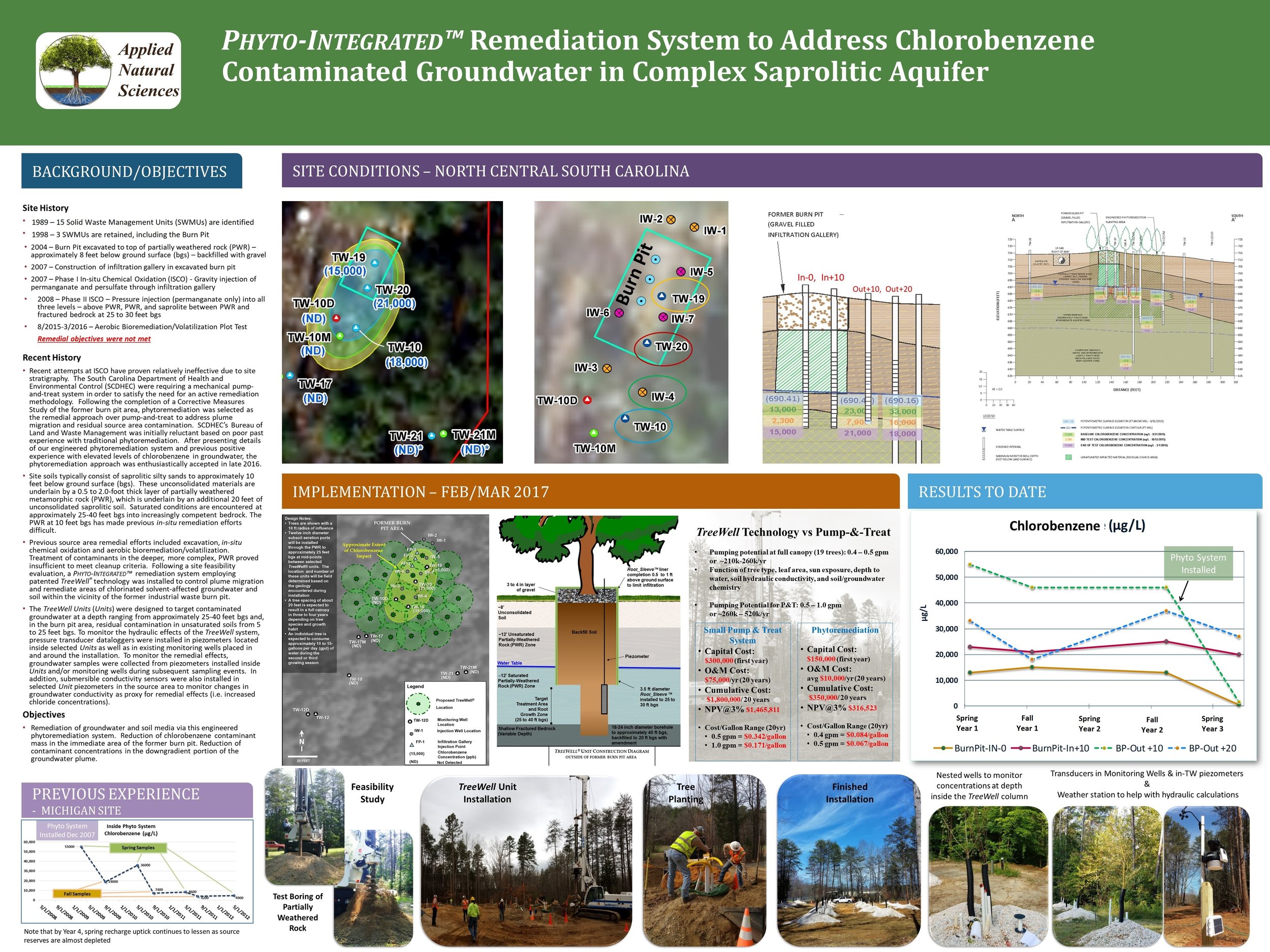
Is there a nature-based, cost-effective solution for your PFAS problems?
Applied Natural Sciences’ innovative TreeMediation® services go beyond the capabilities of traditional phytoremediation. Our patented TreeWell® technology allows access to deeper groundwater and bedrock aquifers, thus providing sustainable, nature-based alternatives to conventional remediation techniques.
Pushing PFAS Research Forward
-

Pilot at a Michigan State-funded Site
TreeWell units were installed at an orphan site in conjunction with Michigan Department of Environment, Great Lakes, and Energy (EGLE). This location had been home to a tannery, which closed operations in 1952, but soil and groundwater samples taken 65 years later detected PFAS.
Data from this site will provide insights into PFAS transport and fate, and …[help]
-

European Pilot
A large-scale pilot project utilizing our TreeWell technology has been installed at an active chemical plant in Europe. Research is focused on PFAS fate and transport as the straw TreeWell units draw PFAS-contaminated water [into the soil column?] where it is subject to microbial degradation and uptake by the tree.
At the same time, our proven technology is addressing 1,4-Dioxane issues and has provided full “overall” hydraulic containment after the first growing season, high estimated mass uptake (50-100 kg/y), and there is no evidence of phytotoxic effects even at high 1,4-dioxane concentrations.
-

New Hampshire Plating Company Superfund Pilot
Our patented TreeWell Technology has been written into the Record of Decision (ROD) for a superfund project currently in the planning phase.
TreeWell units will be installed along the southern and southeastern boundaries of the 13-acre site to supplement sequestration and/or remediation of chlorinated volatile organic compounds (cVOCs), per- and polyfluoroalkyl substances (PFAS), and 1,4-dioxane in the upper hydrostratigraphic unit.
Considering remediation alternatives for a PFAS project?
-
Let's discuss TreeWell technology's feasibility for your site.
Speak with one of our experienced scientists about a current or potential project.

Learn about our pioneering experience
At Applied Natural Sciences, we are committed to meeting our clients’ unique remedial challenges. As pioneers in our field, we have been applying agronomic processes to environmental remediation problems of soil and water for decades.
How do TreeWell® units work?
• Trees operate as a pump—contaminated groundwater is drawn upward towards roots, while roots are encouraged to grow downward towards contaminated groundwater
• Our specially designed Root_Sleeve™ liner acts as well casing to exclude non-targeted surface water and encourage tree pumping of targeted depth
• TreeWell unit acts as a bioreactor—microbes degrade contaminants before having contact with roots
• Residual contaminants are treated within the tree and/or photo-oxidized within the atmosphere


